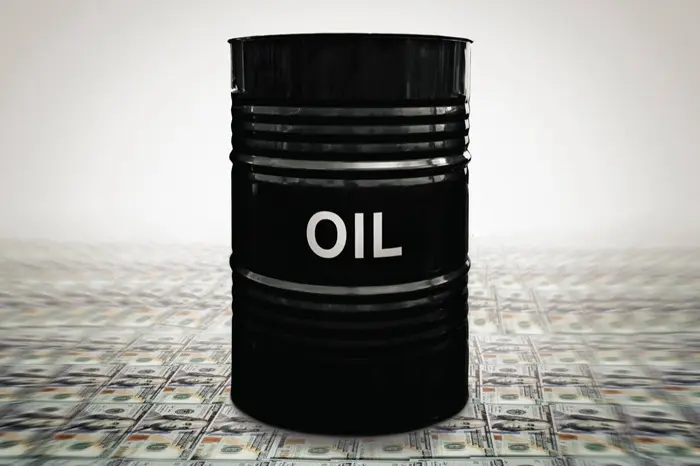Crude oil, often referred to as “black gold,” is a complex mixture of hydrocarbons and other chemical compounds. Understanding how to separate these components is crucial for refining processes that produce various fuels and materials. This article delves into the fundamental properties that enable the separation of crude oil components.
Introduction to Crude Oil Composition
Crude oil is a natural fossil fuel composed primarily of hydrocarbons, which are molecules made of hydrogen and carbon atoms. In addition to hydrocarbons, crude oil contains sulfur, nitrogen, oxygen, and trace metals. The exact composition of crude oil varies depending on its source.
Hydrocarbons in Crude Oil
Hydrocarbons in crude oil can be categorized into several types:
Paraffins: Also known as alkanes, these are saturated hydrocarbons with single bonds.
Naphthenes: Also called cycloalkanes, these are saturated hydrocarbons with ring structures.
Aromatics: Unsaturated hydrocarbons containing one or more benzene rings.
Asphaltenes: Complex, high-molecular-weight hydrocarbons that are solid at room temperature.
Non-Hydrocarbon Components
Non-hydrocarbon components include:
Sulfur Compounds: These can cause corrosion and need to be removed.
Nitrogen Compounds: These can affect the quality of refined products.
Oxygen Compounds: These are usually present in small amounts.
Metals: Vanadium, nickel, iron, and others can be found in trace amounts.
See Also: What Is The Original Source Of Energy In Crude Oil?
Fundamental Properties for Separation
The separation of crude oil components is based on several key properties, each playing a vital role in refining processes.
Boiling Point
The boiling point of a component is the temperature at which it transitions from liquid to gas. This property is critical in the distillation process, where crude oil is heated, and components are separated based on their boiling points.
Fractional Distillation
Process Overview: Crude oil is heated in a distillation column. As the temperature increases, components with lower boiling points vaporize and rise through the column, condensing at different levels.
Key Fractions:
- Light Gases: Methane, ethane, propane, and butane.
- Naphtha: Used for gasoline production.
- Kerosene: Used as jet fuel.
- Gas Oil: Used for diesel and heating oil.
- Residuum: The heaviest fraction, used for asphalt and heavy fuel oils.
Molecular Weight
Molecular weight influences the boiling point and viscosity of crude oil components. Heavier molecules typically have higher boiling points and are more viscous.
Separation by Molecular Weight
Distillation Cuts: Fractions separated during distillation have different molecular weights, which are correlated with their boiling points.
Cracking Processes: Heavy fractions are broken down into lighter molecules using thermal or catalytic cracking to produce more valuable products like gasoline and diesel.
Solubility
The solubility of components in various solvents can be used to separate specific compounds from crude oil. This property is particularly useful in the removal of impurities.
Solvent Extraction
Process: A solvent that selectively dissolves certain components is added to the crude oil. The mixture is then separated into different layers.
Applications: Removing sulfur compounds, aromatic hydrocarbons, and other impurities.
Density and Specific Gravity
Density, or specific gravity, measures the mass per unit volume of a substance. Differences in density allow for the separation of crude oil components.
Gravity Separation
Process: Components are separated based on their density differences. Lighter components rise, while heavier ones settle.
Applications: Used in primary oil-water separation and in separating crude oil from solid impurities.
Viscosity
Viscosity is the measure of a fluid’s resistance to flow. It influences the ease with which crude oil components can be processed and transported.
Viscosity Reduction
Heating: Reduces viscosity, making it easier to pump and process heavy crude oils.
Dilution: Adding lighter hydrocarbons or solvents to reduce viscosity.
Chemical Reactivity
The reactivity of crude oil components with other chemicals can be used for separation and refining.
Catalytic Processes
Hydrotreating: Uses hydrogen and catalysts to remove sulfur, nitrogen, and metals.
Catalytic Cracking: Breaks down heavy hydrocarbons into lighter, more valuable products using catalysts.
Advanced Separation Techniques
In addition to traditional methods, advanced techniques are employed to achieve more precise separation of crude oil components.
Membrane Separation
Process: Uses selective permeability of membranes to separate specific components.
Applications: Removing impurities and producing high-purity products.
Supercritical Fluid Extraction
Process: Uses supercritical fluids, which have properties of both liquids and gases, to extract specific components.
Applications: Producing high-value petrochemicals and removing contaminants.
Adsorption
Process: Uses adsorbent materials to capture specific molecules from crude oil.
Applications: Removing sulfur compounds, aromatics, and other impurities.
Environmental and Economic Considerations
The separation and refining of crude oil components have significant environmental and economic implications.
Environmental Impact
Emissions: Refining processes can release pollutants such as sulfur oxides, nitrogen oxides, and volatile organic compounds.
Waste Management: Handling of solid and liquid waste byproducts is crucial to minimize environmental harm.
Energy Consumption: Refining is energy-intensive, contributing to greenhouse gas emissions.
Economic Factors
Market Demand: The value of refined products depends on market demand for fuels and petrochemicals.
Operational Costs: Efficient separation and refining processes can reduce operational costs and improve profitability.
Regulatory Compliance: Adherence to environmental regulations can impact the cost and feasibility of refining operations.
Conclusion
The separation of crude oil components is a complex process based on properties such as boiling point, molecular weight, solubility, density, viscosity, and chemical reactivity. These properties are leveraged through various techniques, including fractional distillation, solvent extraction, gravity separation, and catalytic processes. Advanced methods like membrane separation and supercritical fluid extraction offer enhanced precision. Understanding these separation principles is crucial for efficient refining, minimizing environmental impact, and maximizing economic benefits.
Through continuous innovation and adherence to environmental regulations, the oil industry strives to meet the global demand for energy and materials while addressing the challenges of sustainability and resource management.
Related topics:





























